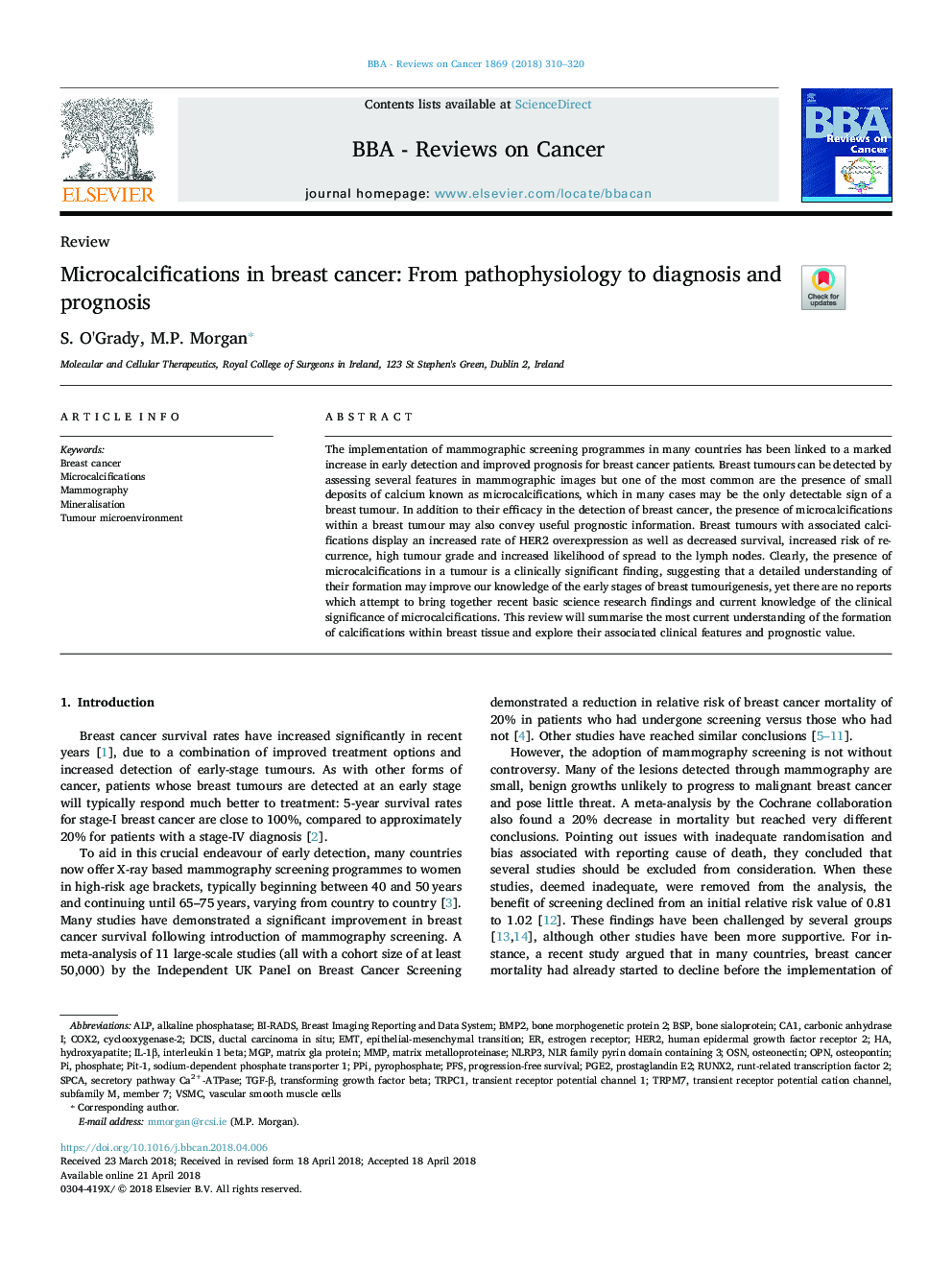| Article ID | Journal | Published Year | Pages | File Type |
|---|---|---|---|---|
| 8429381 | Biochimica et Biophysica Acta (BBA) - Reviews on Cancer | 2018 | 11 Pages |
Abstract
The implementation of mammographic screening programmes in many countries has been linked to a marked increase in early detection and improved prognosis for breast cancer patients. Breast tumours can be detected by assessing several features in mammographic images but one of the most common are the presence of small deposits of calcium known as microcalcifications, which in many cases may be the only detectable sign of a breast tumour. In addition to their efficacy in the detection of breast cancer, the presence of microcalcifications within a breast tumour may also convey useful prognostic information. Breast tumours with associated calcifications display an increased rate of HER2 overexpression as well as decreased survival, increased risk of recurrence, high tumour grade and increased likelihood of spread to the lymph nodes. Clearly, the presence of microcalcifications in a tumour is a clinically significant finding, suggesting that a detailed understanding of their formation may improve our knowledge of the early stages of breast tumourigenesis, yet there are no reports which attempt to bring together recent basic science research findings and current knowledge of the clinical significance of microcalcifications. This review will summarise the most current understanding of the formation of calcifications within breast tissue and explore their associated clinical features and prognostic value.
Keywords
NLR family pyrin domain containing 3OPNVSMCPiT-1BMP2BI-RADSBSPIL-1βcox2NLRP3PGE2TRPM7RUNX2DCISMGPTRPC1TGF-βCA1MMPPPIHER2SPCACarbonic anhydrase IPFsALPAlkaline phosphataseOsteopontinOsteonectininterleukin 1 betaprogression-free survivalTransforming Growth Factor BetaEMTMicrocalcificationsOSNBreast cancerVascular smooth muscle cellsbone sialoproteinCyclooxygenase-2Runt-related transcription factor 2Phosphatematrix metalloproteinaseMammographyMineralisationTumour microenvironmentHydroxyapatiteMatrix Gla proteinbone morphogenetic protein 2Prostaglandin E2PyrophosphateDuctal carcinoma in situEpithelial-mesenchymal transitionbreast imaging reporting and data systemEstrogen receptorHuman epidermal growth factor receptor 2
Related Topics
Life Sciences
Biochemistry, Genetics and Molecular Biology
Cancer Research
Authors
S. O'Grady, M.P. Morgan,
